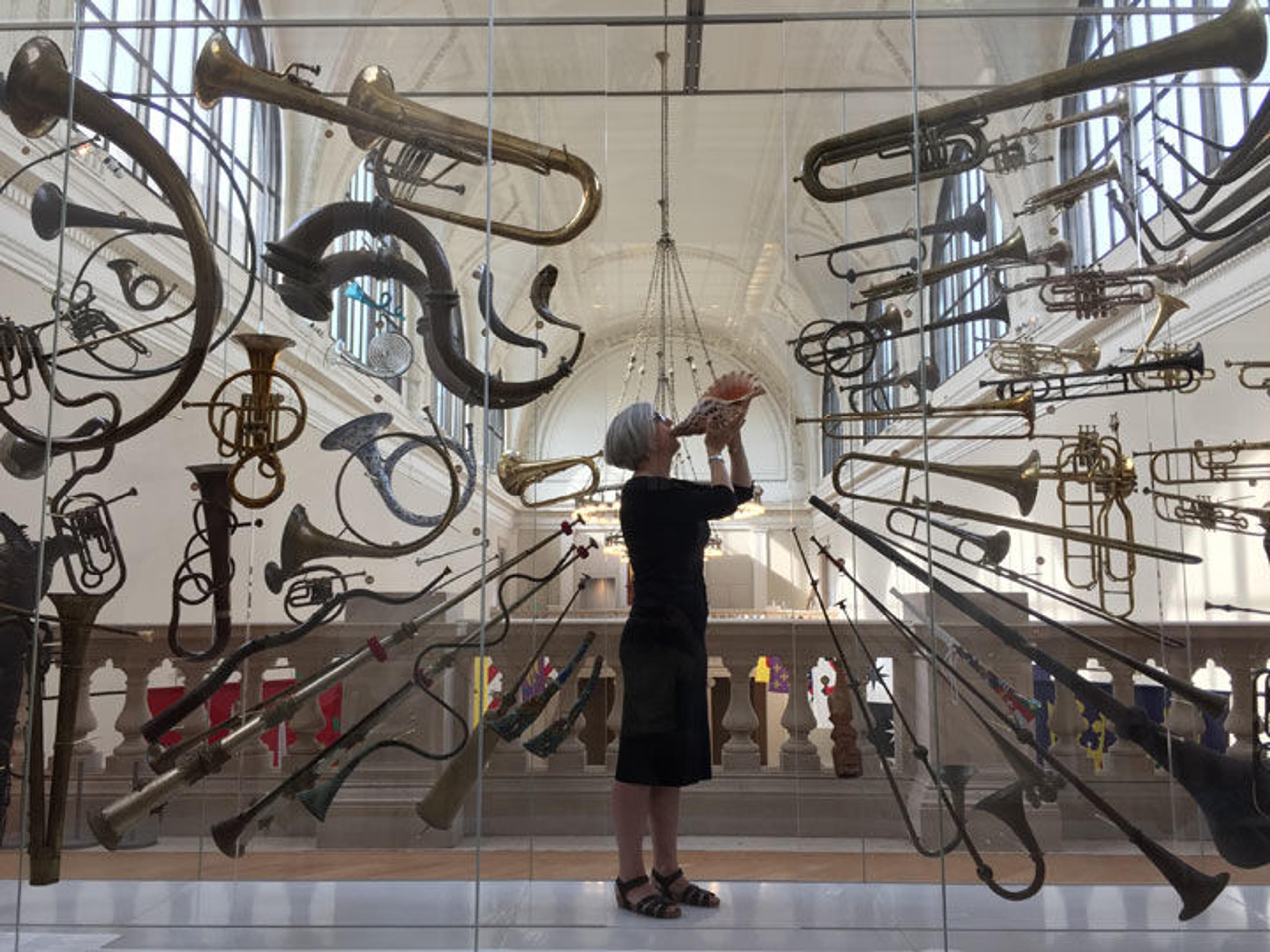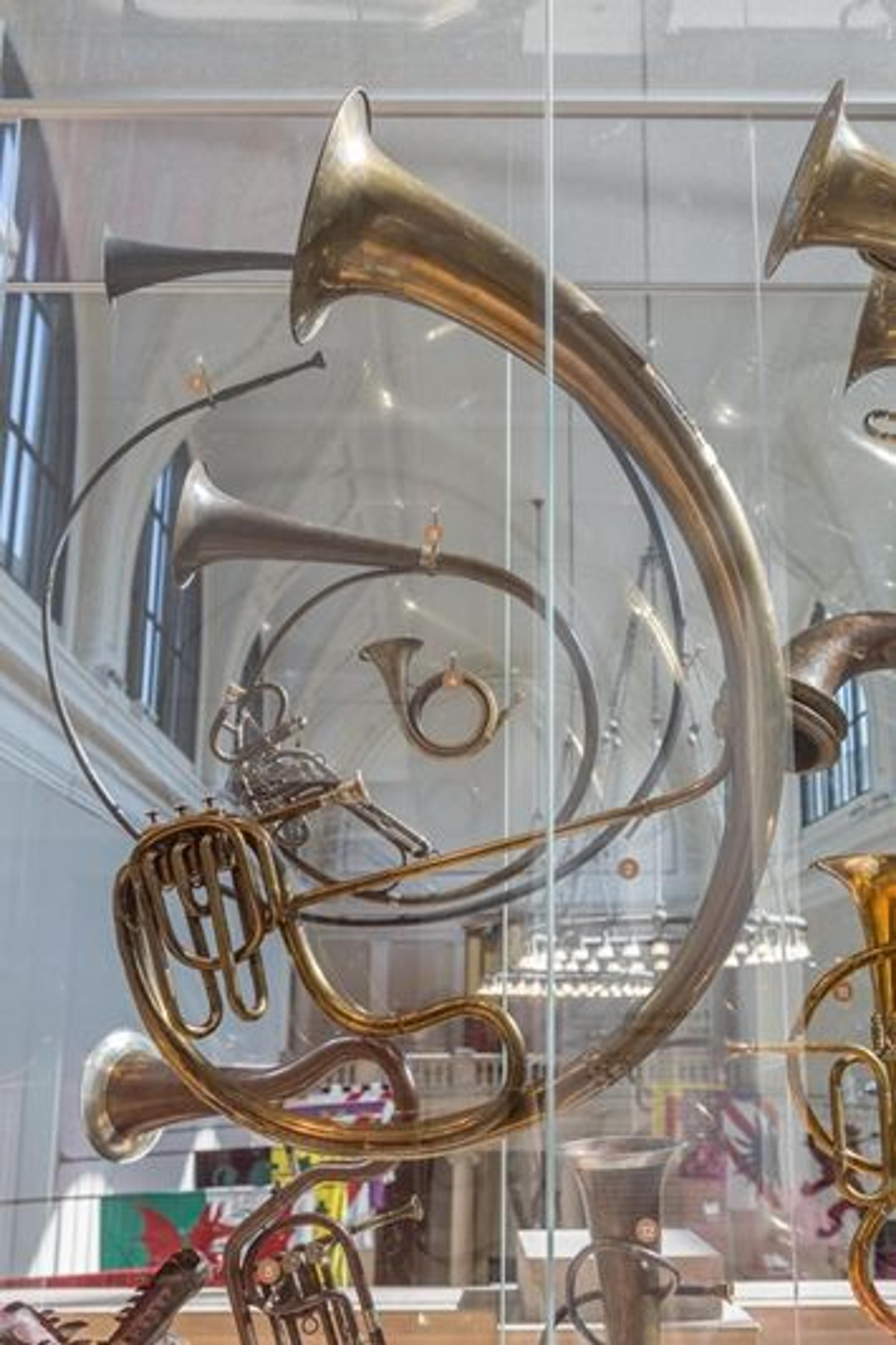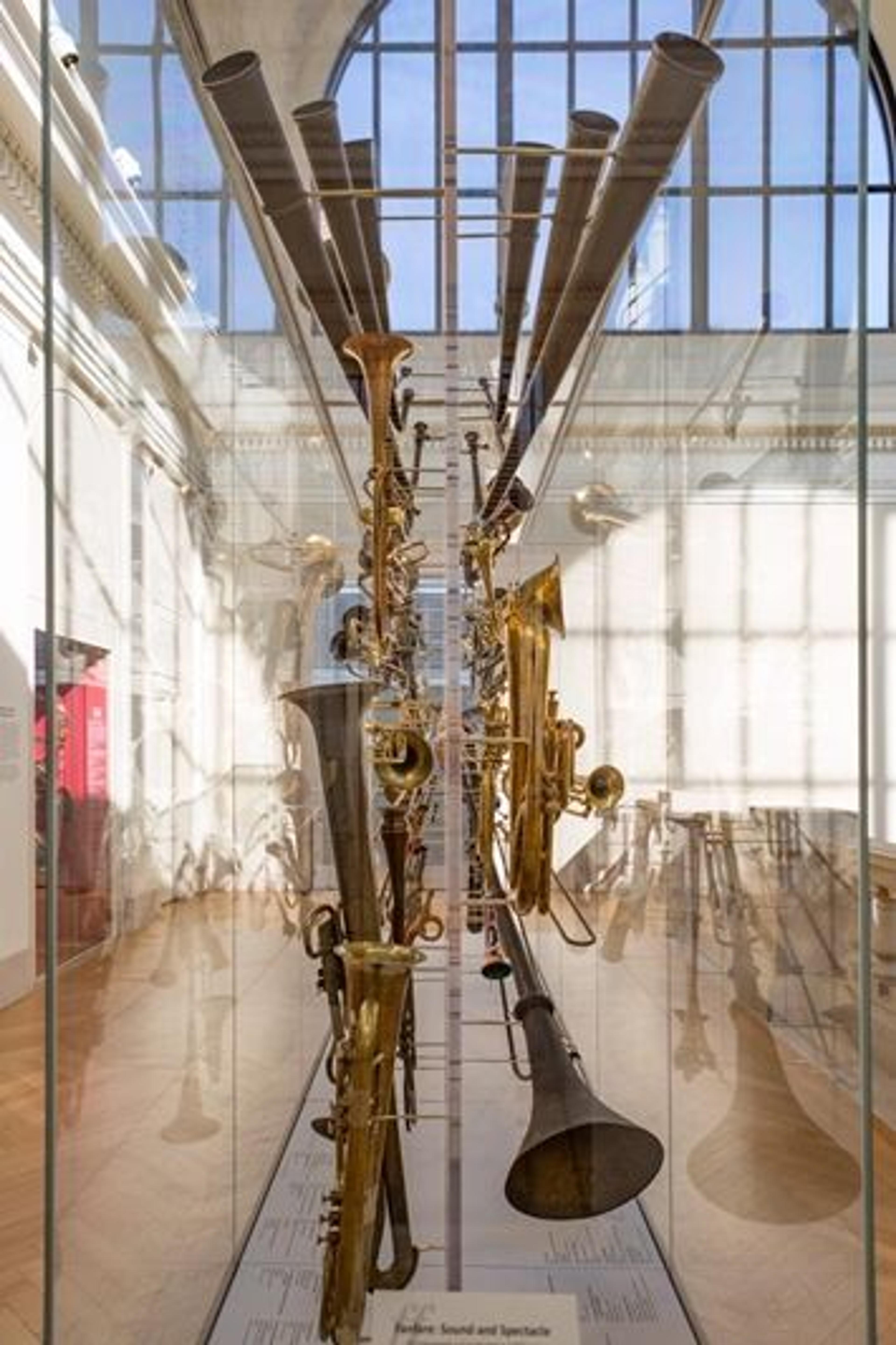Sound the Trumpets (and a Conch)! Fanfare Is Now Open

The author sounds the charonia tritonis, or conch, that serves as the center of the Fanfare display now open in gallery 680.
«Fanfare is the signature display in the first of The Met's four Musical Instruments galleries to be reopened as part of an ongoing campaign of major renovation and reinterpretation. It invites you to explore the artistry, diverse forms, and interwoven uses of brass instruments throughout time and place. From sacred conches, animal horns, and pottery trumpets, to a majestic karana from India, Civil War–era over-the-shoulder horns and a vuvuzela, Fanfare features 74 instruments spanning two millennia and five continents.»
One of the most powerful objects is the charonia tritonis shell that occupies the center of the installation. It is easy to imagine the sense of awe and wonder that the first person to summon sound from a conch like this by blowing into its broken-off tip must have felt. From these early beginnings, the instruments of Fanfare radiate outwards to chronicle the use of "brass" instruments to signal, express status, accompany rituals, and make music.
Pairings of instruments that highlight cross-cultural and chronological resonances, such as Adolphe Sax's bass saxtuba (left) and a historic facsimile of the Roman cornu that inspired its design, punctuate the display. The gallery's wall cases, which include an additional 21 instruments, address themes such as how brass instruments work and the development of valve systems.

The layout and interpretation of Fanfare is a departure from traditional displays of musical instruments. As a brass player, my intellectual and visual inspiration in conceiving this installation was drawn from the concept of a fanfare—both as a piece of music that announces someone or something important and as the ranked group of musicians who perform a fanfare. The exuberantly arranged display vitrines of instrument makers at the great exhibitions of the 19th century were also very much in my mind's eye.
At the heart of Fanfare's narrative concept and layout is its position at the main entrance to the Department of Musical Instruments' galleries, which casts it as a preface that introduces the global scope of our collection both geographically and through time. Fanfare also speaks to our overarching gallery renovation theme of "the Art of Music" as an artistic installation in its own right and by showcasing the sculptural nature of brass instruments, their diversity of forms, and the artistry involved in their production.
A freestanding structural glass showcase specially constructed for the display and an innovative mounting system allows every detail of each instrument to be seen from all sides. This visual aesthetic was designed to resonate with the light-filled space of the gallery by exuding luminosity, transparency, and a sense of playfulness.

Through the theme of the Art of Music, the renovated galleries will explore the artistry of instrument making and music across 5,000 years of history and around the globe in the context of The Met's unparalleled collection. The next phase of the Musical Instruments galleries renovation—which includes the organ balcony and the first of the larger galleries, which will explore the Art of Music across time—will open in spring 2018.

Fanfare is now on view in gallery 680.
Bradley Strauchen-Scherer
Dr. Bradley Strauchen-Scherer is a curator in the Department of Musical Instruments.